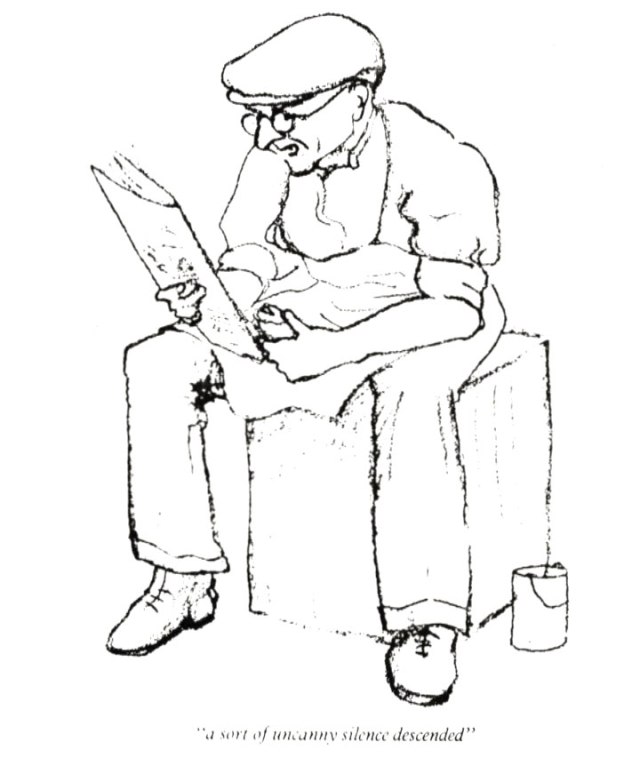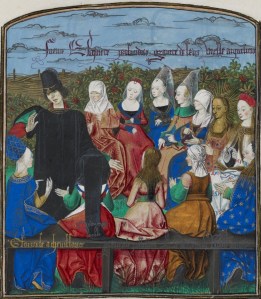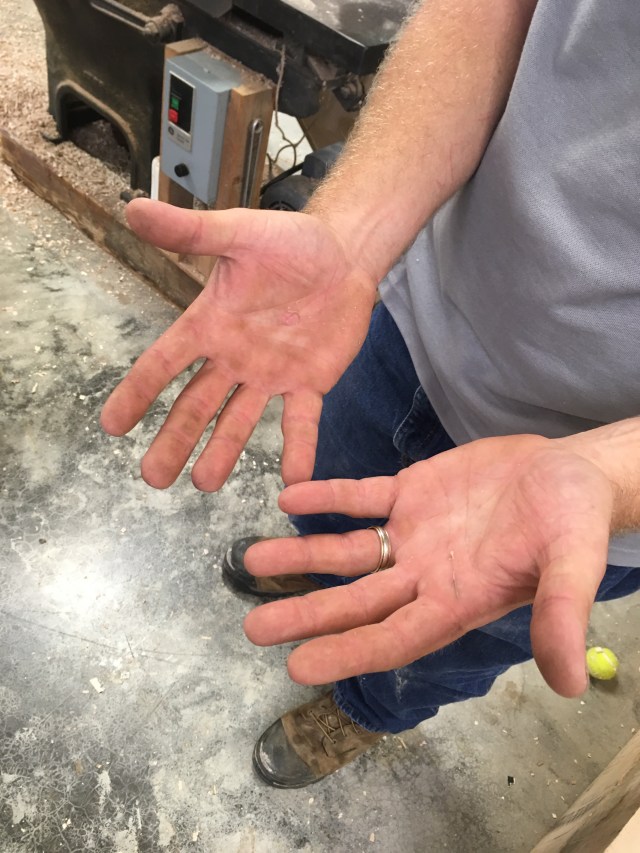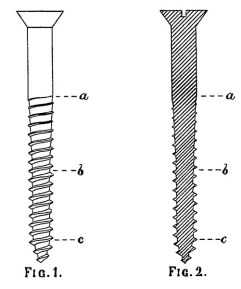Get to Know Charles H. Hayward, Part II –

Charles H. Hayward was one of the greats. As editor of The Woodworker magazine he was the standard-bearer for handwork in the 20th century. We have spent eight years scanning and editing his work to present two volumes of “The Woodworker: The Charles H. Hayward Years.” We think you will enjoy these books even more if you learn a little about Hayward’s life. Part I of this series is here.
Many of the old houses in Shoreditch were in an appalling state of disrepair, for although built originally as humble dwelling houses in long terraces, their use as workshops had resulted in shocking deterioration. Woodwork was innocent of paint, locks were frequently broken and replaced by padlocks and staples, an inner doors were invariably missing altogether. Stair treads were reduced to paper thickness, and no one saw the necessity for handrails – indeed they would have been in the way when timber or furniture had to be taken up or down. I have since wondered how they ever escaped being burnt down, for quite frequently, when a man had a veneering job to do he would light a shaving blaze to heat his cauls almost beneath the staircase.
In the shops around the district you could buy anything needed in furniture making. Veneers were available in consecutive leaves both knife – and saw – cut, in mahogany, walnut, oak, and many of the decorative hardwoods. There were also bundles of off-cuts, and sheets of marquetry in both 18th century patterns and (then) modern designs; ready-made turnings and legs of all kinds were commonplace. There were dozens of stores where metal fittings of all kinds were available; and there were polish houses where every kind of french polish and stains could be obtained; scotch glue (usually in cakes to be broken up); and of course there were tool shops where Norris planes were almost commonplace, and believe it or not, you could still buy a wooden hand-brace with brass strengthening pieces let flush into the wood.
My own very early workshop life in the pre 1914 days was in a workshop near Victoria. We reckoned ourselves as “West End” and were inclined to speak in a superior way when talking about Shoreditch, though in fact some very fine cabinet work was turned out in some of its workshops. Nearly all of our work was antique either reproduction or “fake”, and I use that latter term in a general sense, since it is often difficult to decide when a thing is an outright form of forgery or has been altered in some way, possibly to save it from further deterioration. We did a mixed class of work. The more skilled craftsmen were engaged on first class cabinets – shaped front sideboards, pieces with elaborate barred doors, and in addition was a whole range of good quality but relatively simple items.
Memory is a curious thing. Even when it is retentive it can play curious tricks, not only with past events but in the way we come to regard bygone happenings. Sometimes something which at the time was distressful or painful can in retrospect be wrapped around with a sort of protective padding which softens the picture it conjures up. Not that all the past was really one-sided, but that it is only natural to recall the better aspects of things and forget that almost everything has its less perfect side.
Perhaps the chief difference between the attitude of life then and that of today was that things then seemed to be in a settled state forever. We thought and acted as though the next few decades would see us in the same workshop, and quite likely at the same bench. There might be a few minor events such as a man changing his job, or possibly being sacked (redundancy was unknown in those days), but such things were trivialities and did not affect our general way of life.
Not that we didn’t argue about things in general, often in a heated way. Politics and religion, I recall, were the chief subjects, and opinions, frequently backed with maledictory or profane references, were hurled across the workshop from one end to the other. But such observations were frequently so much hot air, and were accepted as a sort of buffer against the tedium of things in general.
So life went on in sort of a jog-trot way to the accompaniment of the inevitable workshop noises of hammering, sawing, and planing with the occasional whine of the machine planer in the shop below, until the bell was rung for breakfast or tea break when a sort of uncanny silence descended on the workshop, argument and chatter being suspended by a sort of unspoken agreement in the immediate business of making and drinking tea and eating sandwiches. These intervals in general workshop life were largely a necessity in those days for we worked quite long hours. In summer time the working day started at 7am, with a break of half an hour for breakfast at 8 o’clock, then on till 1pm when the shop closed for an hour. The day finished at 6pm. It was varied in winter by a start at 8 am, finishing at 7 pm but with the breakfast break replaced by a tea interval.
Some of the men came from quite a distance such as Surbiton, and must have left at 5:30 to catch the 6 o’clock train. Even so there was a walk of about a quarter of an hour at the end of the journey. I still recall the scene outside the workshop door in the early morning. I myself arrived on a bike, but nearly all the men either walked or came by tram, and stood about in doorways or leaned against railings, awaiting the arrival of the foreman to unlock the door. Five minutes later the door was locked again and any unlucky late arrival had to kick his heels in the knowledge that an hour’s pay would be deducted from his pay packet at the end of the week. Indeed I have heard some choice, imperfectly smothered epithets uttered by an unhappy latecomer as he arrived panting only to find the door locked.
— Charles H. Hayward




